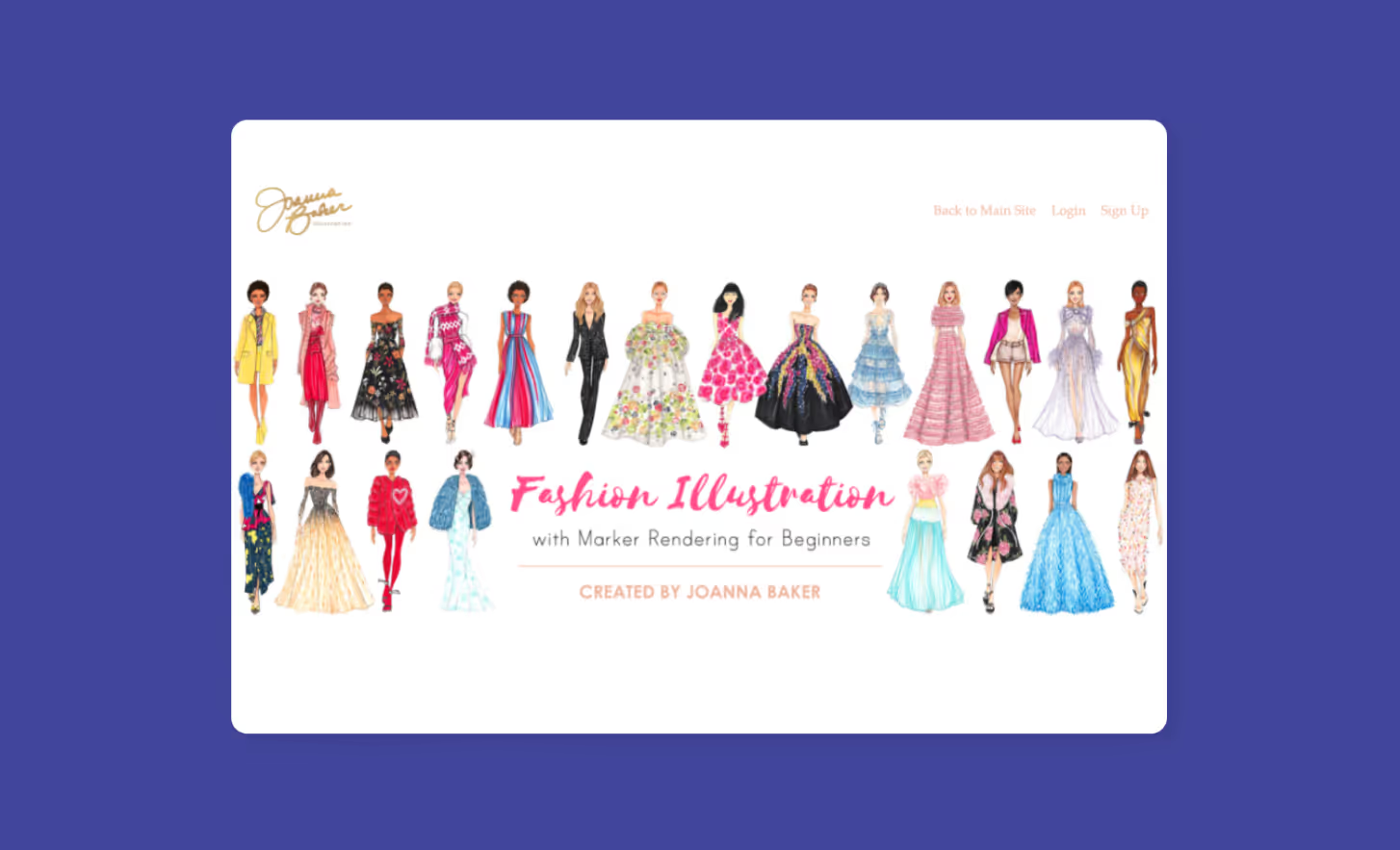The bulk of the work to create and publish your course comes from writing your course content, filming your video lessons, and developing PDF workbooks. Uploading it to Teachable is the easy part. After all, that’s how we support you in monetizing your expertise. Now that you’ve created your homepage, we’ll walk you through how to upload all your hard work onto Teachable seamlessly so you can get ready for launch.
Your courses are the main product you offer your audience. Each one is unique and can come in different formats and sizes like a mini-course, a standard course, or a flagship course. Flagship courses range from those that can be completed within a day to courses that take three to six months to complete. Similarly, courses also come in different styles, such as video-based or text-based courses. The choice is yours. That’s why we give you the option to customize your work when you create and publish your course.
Organize your content
Think about your curriculum and how you want your students to progress through your course. At Teachable, a course is made of sections and lessons.
Sections contain groupings of lessons. And lessons are structured, informational units composed of text, files, video, and images. (Trust us, understanding this will be instrumental before you put in the effort to create and publish your course.)
For example, in the test course we created below, you can see there are two sections: Research 1.0: The Past, and Research 2.0: The Present. You may also refer to them as modules or chapters of a course. Here, lessons are used to break down the larger research theme. So the audience can learn about the different types of research they need to do:
You may have used Google Drive, Microsoft Docs, video files, and PDFs to create your content. Teachable allows you to upload your content from:
- Your Computer
- Web Images
- A Link (URL)
- FTP
- Dropbox
- Google Drive
- OneDrive
In whichever platform you’ve used to develop content, rename and organize them by Section1-Lesson1. This will make the upload process much easier. And make sure your file types are in the recommended sizes, file types, and resolution:
Video
- Supported file type: .mp4, .mov, or .avi
- Recommended resolution: 720p (1280 x 720px)
- Recommended frames per second (fps): 24-30
- Supported file size: 2GB or smaller
- Audio specifications: H.264 + AAC audio
Images
- Supported file type: .png or .jpg
- Recommended resolution: 1000px wide or smaller
Audio
- Supported file type: .mp3
- Recommended resolution: High Quality
- Audio specifications: AAC audio (advanced users)
- Supported file type: .pdf (non-fillable)
One-click bulk upload
All organized and ready to create and publish your course? Now it’s time to upload. So head over to Course > Curriculum in your school admin. Here’s how you can upload your course in a few minutes:
.gif)
- Hit New Section on the top right and create the first section of your curriculum.
- Click Bulk Upload, and choose where you’d like to upload your files from.
- Select the files that fall in this first section. All files will be uploaded as their own individual lesson.
- Select Upload, and you’ll see all the files under your first section.
Repeat for all the sections you have in your course until you’ve uploaded your entire curriculum. You can preview your course by hitting the preview button. And you’ll be able to see how your students would interact with your course and if the order that you’ve set makes sense.
If there are things you want to move around, you can drag and drop lessons within their section, as well as move them to a different section.
{{coursecurriculum-component="/blog-shortcodes/blog-popup"}}
Customize your lesson content
Within each lesson you’ve uploaded you’re able to add additional content to provide more instructions and a description of what that lesson includes. Here are the additional content types you can add to your lessons:
Text content
.gif)
If you’ve written any of your course content out, you’ll want to copy and paste this content into the relevant lessons. Any uploaded Google Doc or Word document will be uploaded as a file available for download. So, if you prefer the text to appear in the lesson itself, you’ll need to bring that content over by copying and pasting.
Once you’ve added the text, you can drag it above or below the file you’ve already uploaded. But if you’d like to create a new lesson with text only, you can do that too.
Custom code
.gif)
If you need, you can easily embed a video or a survey in your lesson. You can click on the Add Custom Code tab and insert the code you already have. Again, once you’ve added in the code, you can drag it above or below the file you’ve already uploaded.
Increase student engagement
Start a discussion with lesson comments
If you want your students to engage with each other and ask you questions, you can enable lesson comments. Find the lesson you would like your students to share their thoughts on. Click into that lesson, scroll to the bottom, and toggle the Comments button on.
Here’s how you can use lesson comments in your course:
To respond to the comments you have in your course, you’ll find all the comments in Course > Comments. And you can also customize the comments settings in Settings > General:
- Enable comment moderation: This would require you or any other school admin to approve the comments before they show up.
- Allow multi-level threading: This will thread comments and make it easier for users to reply to a specific one.
- Enable comment attachments: Allow users to attach an image to their comments.
Provide downloadable resources
Not all the files you’ve uploaded via bulk upload will be available for download by default. But the exception is Word documents which are automatically made available for download.
If you want your PDFs, videos, or audio files to be downloadable, make sure you select the download icon. Once enabled, it’ll appear green. You can also select all the lessons you want to make downloadable and toggle the download setting for all at once.
Test your students with quizzes
Teachable provides basic multiple-choice quizzes within the lesson editor. On the Pro plan and above, you’ll be able to offer graded quizzes to test how your students are doing. These quizzes are designed so that students will only have one chance to take them. All scores will be saved and factored into your quiz reports.
Award completion certificates
To boost your course’s credibility, you can also award native completion certificates. Navigate to Course > Certificate, and you can create your own certificate with our templates or by using Liquid/HTML.
Demo-Certificates of Completion
- Upload your logo: This logo will go at the top of the certificate.
- Title: This is what you’d like to name the certificate (i.e. Certificate of Graduation).
- Subtitles: This is the language you’d like to use before your student’s name (i.e. Awarded to).
- Graduating from: This is the message you’d like to include for completing this course.
- Signature: You can upload your signature to make the certificate more official.
- Serial number title: The serial number that is generated for each certificate is unique, but you can change the title.
- Colors: When you toggle to the Design tab, you’ll also be able to update the background color, as well as the primary and secondary text colors.
A course completion certificate itself can be a milestone your students work toward. And as an instructor, you might also want to add additional challenges to make a certificate more valuable.
Level up with course compliance
Use course compliance to enforce lesson completion, enable video compliance, and require quiz scores to validate student progress and meaningfully reward their accomplishments. To enable course compliance, navigate to Course > Information > Course Compliance.
You’ll have the option to:
- Enforce lesson order: Students must complete each lesson before they are able to move on to the next one.
- Require video watching: If a lesson has a video component, then the student will not be able to move on until they’ve watched 90% of the video.
- Require graded quiz completion: Students must complete and meet a minimum passing score before they can advance to the next lesson. You’ll be able to set the number of attempts your students have before they’re locked out and you’ll have to reset it on their behalf.
{{firstcourse-component="/blog-shortcodes/blog-popup"}}
Preview and publish
You’ve done the work to create and publish your course. And now you’re ready to go live. Be sure to preview the course curriculum before you publish your course. Navigate to Course > Information and select the Curriculum tile to see your entire course laid out. Take the time to go through your entire course and ensure it’s the experience you want your students to have. And when you’re finally ready, hit Publish.
You’ve set up your first course on Teachable. Next up: Create your sales page and set up your payments.
Join more than 150,000 creators who use Teachable to make a real impact and earn a real income.









